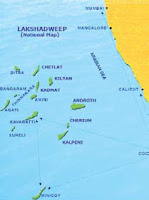As it is, interviewing a lawyer is a tough task. And if the lawyer heads an organization that is often embroiled in controvresies, the task becomes more oneros was my dilemma, as I started my interaction with Peter Dengate Thrush, chairman of the board, ICANN. The Kiwi Barrister had come down to India for an ICANN event and I met up with him at one of the seminars he was attending. He is one of the rare people, who genuinely was eager to attus. Thiend all the sessions at the seminar (more so because he was the keynote speaker). Thus, I had to time the conversation between two sessions and he sat down with a cup of coffee.
Now, ICANN as an institution over the past decade has been involved in lot many controversies, some of its making and a majority of them not. Thus, as I would put forth those questions, Thrush would thrash them away in his characteristic ‘lawyerly’ way. Certain questions, he would make me repeat, then a few times he would ask me to elaborate and sometimes he would just dismiss them altogerther. Everytime he WAS ready with his defense and ready it to back it up. As the interview proceeded, he softened a bit and that is when the conversation,in a sort of way, took off.
While researching on Thursh, I had come across this very tragic incident in his life, wherein he lost his father, wife and brother in a car accident. I wanted to ask him about the foundation that he has set up in the memory of his wife and family, but I let it be. I really didn’t wish to remind him of those traumatic days.
Here is Barrister Thrush defending ICANN on all the diiferent issues that I could think of. Believe me, he did a jolly well job.
*************************
‘US is not controlling Net Resources’
It has been nearly a decade since Internet Corporation for Assigned Names and Numbers (ICANN) came into being at Marina Del Rey, California. Set up as a non-profit corporation to oversee a number of Internet-related tasks previously performed directly on behalf of the US Government by other organizations. The chief task of ICANN is to manage the assignment of domain names (over 145 million domain names) and IP addresses, popularly referred to as the Internet Assigned Numbers Authority (IANA) function. Yet, over the years, ICANN has been embroiled in controversies, be it political or technical in nature. The main grouse many seem to have with ICANN, is that it seems to be a trifle more conscious to the whims and fancies of the US Government.
In the past few years, there has also been an increasing chorus asking for either ICANN to be freed from its obligations to the US Government, or all together stripped of the role it plays. Nonetheless, the ICANN boat seems sail quite merrily, recently it launched the .Asia domain name with much fanfare and also announced the shift to IPV6 from IPV4. In midst of all this jumble-tumble, there was also a change of guard at ICANN, Internet pioneer Vincent Cerf was replaced by barrister Peter Dengate Thrush as the chairman of the board. It has been a significant move, as many argue that by appointing a New Zealander the Board is trying to play down its association with the US Government. Whatever be the reasons or compulsions, one thing is for sure, Thrush is completely in control with the developments at ICANN. It is almost impossible to pin down this suave barrister, he seems to be ready at all times with facts, figures and arguments to prove his contention.
Recently, Thrush had come down to India to attend the 33rd ICANN conference held in India. Taking some time out, Thrush spoke at length to Dataquest on the different controversies that surround ICANN and what he feels about the coming years. Excerpts.
How does it feel about fitting into Vincent Cerf’s shoes?
It is a big honor really, to follow someone who is such a pioneer and rightly rewarded for his work. I remember mentioning in my speech that he was ranked at number 11 in the list of 40 most  influential technologists. I was elected unamiously by the Board, thus I have got the confidence of the rest of the Board. I have been on the Board for years, and know what the expectations are and how it functions. SO I have to just press on and execute the responsibilities that I have been given.
influential technologists. I was elected unamiously by the Board, thus I have got the confidence of the rest of the Board. I have been on the Board for years, and know what the expectations are and how it functions. SO I have to just press on and execute the responsibilities that I have been given.
What will be your main tasks as the chairman of the Board?
Rather than main tasks, I think that there are a whole lot of tasks, starting with the most obvious one, i.e., to chair the meetings of the board to ensuring that the right direction is given to the corporation. Thinking strategically, being aware of the opportunities, obligations we have to the environment and the society at large, are some of the major responsibilities of the chair.You recently spoke about the fact that ICANN had outlived the Joint Project Agreement (JPA)?What I had stated in fact was that JPA had itself outlived itself, it only had a limited life, and it was put in place for only three years. With a very clear indication that it should be reviewed half way through. The point about JPA is that sets up a number of conditions, which if ICANN completes them, it would have done the work that is necessary to be the trusted coordinator of resources and the Board thinks that those things have been done. We have to be careful though, as some of those things can never be really done, as they are never ending, it is a sort of journey not arrival. The question is whether we are doing it well enough. And the feedback that I have been getting from the community is that we are doing those things well enough to be allowed to continue to do.
There is often this perception that the US government is controlling all the resources of the Internet, discreetly or overtly. Your views.
First up, it is a wrong perception that the US government is controlling the Internet resources. There are some very specific roles of the US government used to play for historic reasons. Most people are very grateful that they did that and that they continue to do that. And we are talking about transition out of a set of controls. The JPA doesn’t really provide any control and the removal of the JPA would not affect the control mechanisms that are in place. There are a number of key control mechanisms currently in place, and the most important one is the contract that the US government gives to ICANN, the Internet Assigned Numbers Authority (IANA) function. It is in fact the IANA function that actually controls what goes into the root.
And there is still a continuing role, in terms of changes to the root by the US Department of Commerce. Now we recognize that is in regards to what the other governments particularly in terms of changes to the country-code top-level domains (CCTLDs) for example, find difficult that the US Department of Commerce official actually has a role to play changing something which, for better or for worse, countries see as something that is very close to their own sovereignty. That isn’t actually going to change by the JPA coming to an end. JPA is much more about forming and building ICANN, the rules under which ICANN runs will continue to be as they were.
If you consider the following, it will be obvious that the US government does not interfere in the functioning of ICANN as the chairman of the board is from New Zealand (Thrush), the vice chairman is from Italy, the CEO is from Australia. We are gradually moving to a different environment, where our accountability will be to the Internet community of the entire world rather than to any one government.
According to Prof. Milton Mueller, in the past ICANN has been ‘generally willing to go along with US control’. What do you say to that?
Milton is a good friend of mine, and we disagree on a number of things. I am not quite sure of what you are referring to but what ICANN is prepared to go along is a number of things that I mentioned earlier. First of all, we are very happy to be a California registered corporation, as a result of that we get tax advantages in the US, which we are very happy to have, so we are prepared to meet the obligations of being a US corporation to get that advantage. We are delighted to have the contract from the US Government on the IANA functions and we are prepared to live with the obligations of that creates. We work closely with the US Department of Commerce in relation of the World Summit of Information Society and the committee that came out of that, the working group on Internet Governance (WGIG). So we have a close relationship with the US government. That said, that government has no greater say in the policy issues that come in front of us, for e.g. the debate on whether or not to introduce .XXX into the root.
There is speculation that the US government played a more influential role than the other governments, but as a member of the Board at that time and someone who voted in favour of .XXX for entirely different reasons, I was unaware of any untoward pressure from the US government.
In the end, we are very clear about what the issues are, we are a US corporation at the moment that brings with it, obligations and responsibilities, so if you are talking about that then there is no problem. The US connection is something that the media is much keener to focus on than anyone else. The reality is ICANN is enormously international, with 21 members of the board, a vast majority of those who come from outside the US. There is staff spread all around the world, the meetings are held almost anywhere but the US. Probably I think it is more of a media issue than a real one.
In such a scenario, what do you see as the role that various governments continue to play in the functioning of ICANN?
I think a strong Governmental Advisory Committee (GAC) is seen as essential to the wellbeing of the continuous survival of ICANN. ICANN has to be the place where all the interested stakeholders come together and much of what we have done over the past 10 years is building a structure in which all those different people can come and can have their voices heard, and for a balance to be struck in all the competing interests. My first 4-5 years at ICANN, went fighting on the behalf of one of those voices, the country code managers, and there is now a place in ICANN in terms of CCNA for country code managers to come and talk to each other about whatever they want, talk to ICANN when they need to about crucial issues for country code management. Similarly for the GAC, there is the place for governments to come, band together, and sort out amongst themselves firstly whatever their issues are and finally when they are more or less in agreement to bring those issues forward as the governments of the world. Hence, their role is as crucial, as it for all the other components, probably more if you take the collective influence governments have worldwide.
There is a constant criticism on ICANN on issues of transparency, i.e., there hasn’t been sufficient public disclosure, ‘too many discussions take place out of the sight of public’. Your comments.
I don’t think that is a fair description of the criticism. That is a transparency problem, and I think that ICANN is reasonably transparent in terms of its processes do go on in public. In fact, we recently were audited by a global body that found that we had very high levels of transparency. That said, we can always do better. We are doing more, we have got a manager of public participation who is doing a great job of running alternative methods of making information available. We are working towards substantially improve the quality of the website, where you can find things all that has been published in the past and we are working towards making the website much more user friendly. We have got blogs running. It will be fair to say that we genuinely accept that we want to run a transparent way, the reality is that if we don’t do that, then we need to stop and go back and explain and get the community behind us again on a particular issue. That will be much more complicated and time wasting than if we just take the trouble to be clear about what we are doing. So first and foremost, I think it is a passion for most of us to make sure that things are done in a transparent way. From a business perspective as well, it is the best way to run a business, keep the community informed and moving in the same direction.
I think that the objection, I believe it to be fairer one, is that there are insufficient accountability mechanisms and again we take it seriously and are exploring ways at making sure that the individual components of ICANN are responsible to their communities and that ICANN itself is collectively responsible to the whole of the community. We are having a particular debate about how under certain circumstances, the Board itself might be able to be recalled in case of substantial community discontent on a particular decision. As you might know, currently, it is rather difficult to remove a director. Most of us think that it probably isn’t appropriate and think that director should be responsible and accountable as they are in other commercial corporations. What we are working on now, is a mechanism to do that in a reasonable way.
There also seems to be much debate and discussion on spending by ICANN. Consular of European Top Level Domain Registry had apparently accused ICANN of lack of financial prudence, stating that, the organization set for itself ‘unrealistic political and operational targets’.
Again, that is quite interesting, as I not quite sure where that quote came from. But the answer to that is you tell us which part of the budget you don’t want us to do and then we will stop spending that money. We have just published our budget, with operational planning coming closely behind it. All the things in it, are the things that have been asked for, if not demanded by  the Internet community. They want these services, they want these things provided and someone has to pay for it.
the Internet community. They want these services, they want these things provided and someone has to pay for it.
What do you make of the increase in domain registration rates by Verisign, as part of the settlement ICANN had with it. I think it is a commercial matter for Verisign and I am not sure if I in the position to comment on it.
The cost of domain registry is pretty much high, especially for the developing world like India when you factor in the per capita income..
I think you should do more research on that, because the cost of registering a domain name ranges from free, because many people give them away, to extraordinary prices. So it is a question of doing the marketing. You also could be talking about Indians purchasing the generic top level domain names, namely in the .com space. What you should be comparing is the cost of registering .in space or any other space. I think there is an extraordinary range, no one ever requires that you register a .com domain name and in came they want to register a .com. there are very many cheap providers.
But then .in is equally priced vis-a-vis a .com domain name, so it doesn’t really make a difference. Also the fact .com domain names are more popular and one is able to relate to them very well, as .in isn’t as popular here.
Well, then there is obviously a perceived value that you must be prepared to pay for, if you think the value a .com brings. I am not sure if you can have something that you perceive to have more value and then get it for nothing.
There has been much criticism of the Uniform Dispute Resolution Policy (UDRP) as well, what do you make of it?
UDRP has worked very well for what was its primary purpose at that time, which was to provide a very fast and easy mechanism at a reasonable price and in a short time frame to get rid of the egregious cases of cyber squatting. I have acknowledged in a couple of board meetings that UDRP is due for review that was part of the originals things. In the main, I think it has worked substantially well for its purpose. There have been suggestions that its scope should be expanded, that has been rejected by all of the ICANN community unanimously. But yes there are things that can be done make the UDRP better.
There is also the discussion doing round, that decisions at ICANN are not driven bottom up and that the organization is not paying real attention to the Internet user community at large…
I think if that were true, we would all be very concerned. In fact, it seems to be on the contrary take the recent example of the IDNs, there has been huge pressure for that from the bottom up, it has been dealt appropriately by referring to that as a technical matter affecting the substrate, going deep into the engine and we do that with considerable caution. So the Internet Engineering Task Force, has been developing the appropriate protocols and we have taken time to test those and given feedback to the community. I think these are the kinds of things people say, with an outcome that they don’t like. It is a very easy challenge to make. But if you analyse most of the process at ICANN, I am not suggesting that they are perfect, they are done substantially bottom up way.
Sometime back during an interaction with Dataquest, Sir Tim Berners-Lee had stated that Internet can happily survive for the next 10 years without an introduction of a new Top Level Domain name. What do you feel about it?
I concur with Sir Tim, we only need one. We don’t actually need multiplicity of top level domain names. We could only do with one, we don’t need country code domain names, and other domains as well.
But then it is not the question of need, it is a question of want. My view is that, the market wants it, provided it does no harm, then they should have them. Why not create facilities for people, what we have seen is that each time we have introduced a new top level domain name, there has been a great amount of unexpected response from the Internet users. To my mind, it is the classic let the market decide.
How has been the response so far to the introduction of .Asia, .EU, and others?
I don’t have the numbers, but talking to the .Asia people, they seemed to be very pleased with the way their launch has gone. .Eu is also raking substantial numbers of registrations. There are a numbers of measures of success , large numbers or large revenues may not be the best criterion to judge success. For instance, some of the chartered domains like .museum, we will always going to have a very limited amount of museums. So different top level domains are created for different purposes.
Is there a need for an alternative to ICANN, could UN play the role?
The results of the World Summit on Information systems, eventually there was the conclusion that ICANN was the appropriate body for managing the Internet’s technical resources. So that has been thoroughly thrashed out over the years. We are substaintial financial sponsors of the Internet Governance Forum, we support and appreciate the work done by IGF but that should not be confused by the technical job done by ICANN.
The key outcome of the working of the IGF, this is not a function that can be done by a government and that the UN organization is completely not suited to deal with this particular technology. The model that ICANN represent s which is a multi stakeholder model. Remember that the participants of the UN are representatives of governments that is not the appropriate bunch to manage the Internet. That is not my conclusion that is the conclusion of the working group on Internet Governance, which the multistake holder model which brings together the technical community which provides it and the operators who run it domain name registers and the businesses and others. To make this work, you need to have everybody in the room, and that’s inconsistent with most of the UN model.
What are your views of domain name trading?
I think it is tremendously exciting, the market is vibrant and expanding. Trading creates jobs, it creates wealth and it is part of our charter to create competition, and it is one small aspect of the same.And cyber squatting..Remember my original training is as an Intellectual Property lawyer, so I share a greater concern about some of those aspects than other members of the board. In general, we all take infringement of legal rights very seriously. We have to ensure that we have the proper mechanisms to deal with that, what we can’t do is tread into areas where national laws are applicable. So we have to tread carefully.
What is ICANN’s commitment to multilingualism?
We are extremely committed to multilingualism. Again it is a question of budget, we haven’t been able to afford it but at the last meeting at Los Angeles, for the first time we had simultaneous interpretation in 6-7 different languages, and it was hugely beneficial to non-English to be able to understand and participate in our meetings. Most of us thought it was a tremendous advance, so there is a commitment to multilingualism. We are working at making our website multilingual, all our documents should be available in different languages. But you need to bear in mind that it comes at an enormous expense. You have to start having the budget of United Nations to start operating in a UN way. But we do what we can.
What about domain names in non ASCII characters?
We are delighted with the work that has gone on to make the computer be able to read non ASCII script. We are going beyond that, we are talking about hieroglyphs and that will be available in domain names in the future. That hasn’t of course held up, content available in different languages.
What could be India’s role at ICANN?
India’s most visible role at the moment has been with providing the secretariat to the GAC, and we are very grateful for the same. There has also been some financial support for the meeting conducted in New Delhi recently.As India’s economy grows and as the Internet user base widens, as companies become more and more active. ISPs could join hands with ICANN in places like the ISP committee and businesses with the business constituency. There so many places at ICANN, where we would be more pleased to see greater Indian participation.
What is the need to shift from IPV4 to IPV6?
The driving factor has been the fact that by about 2011, we would have exhausted easily accessible blocks of IP4 addresses. Partly because nobody really understood at that time, when 4.5 billion of those were created what the demand was going to be at that time. Internet at that time was used by a few techies sending files from one university to another, who knew that we would have the enormous commercial application since achieved. The new system will have 340 trillion trillion numbers which most of us think is going to suffice for at least the next few months (laughs).
Your views on .XXX
That was a particularly interesting legal situation. Wherein the conditions that were set by the board for creation of new GTLDs had to be met by a new applicant and the debate that the board had was almost entirely whether this applicant had met the conditions and we split on whether or not. And I after working on hundreds of hours over the voluminous documents, averred that the applicant had met the set criterion and the majority board members felt that they hadn’t. It had very little to do with the nature of the content they wanted to provide, except as to have that related to conditions that we imposed on running that particular domain name. So I don’t think so, there was anybody for example on the board, who thought that adult content was bad or good, it was nothing to do with the merits of the content. It was with the safeguards that we require and the operating rules, systems. Under those proposals you had to actually produce a community that you said was going to be served by this proposal. One of the arguments was that the applicant had not demonstrated that supported any community. So there was a considerable debate on what support means, what sufficient levels is, and whether this applicant had met those conditions, that the kind of things reasonable people can disagree on. And some of us thought that they had proved it and others thought they had not. And it had to do very little with the actual nature of the content, it was the nature of the community.
Interesting, though it seemed like a very moral kind of a decision.
I think that’s a mistake, what needs to be reminded that the content they were talking about was moral and legal. I don’t exactly understand the moral aspects, but it was certainly legal. Pornography is legal in most countries, and this applicant was quite clear that he would only be providing legal content . So I think most of us, got past that reasonably quickly, had there been any suggestions about illegal content than the application would have been killed immediately.
It has been close to 10 years of ICANN. What do you make of it?
I think the 10 years have been longer than anyone of us had expected in 1999, when we were arguing about the bylaws and that’s reflected on the fact that MOU with the US government while building of ICANN and what needed to be done was set for 2 years. And we were completely confident completely wrongly that things were completely under control. It was only later that we realised that we had almost all of the things that had been listed in the original document, sort of blueprint set out on a whitepaper. The huge challenges that we faced in 1999 we have tackled them all. So I think we move into the next decade with much confidence.
Shashwat DC








